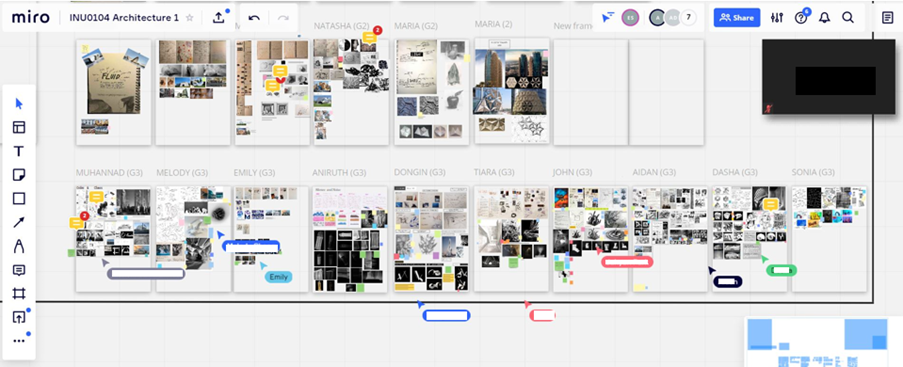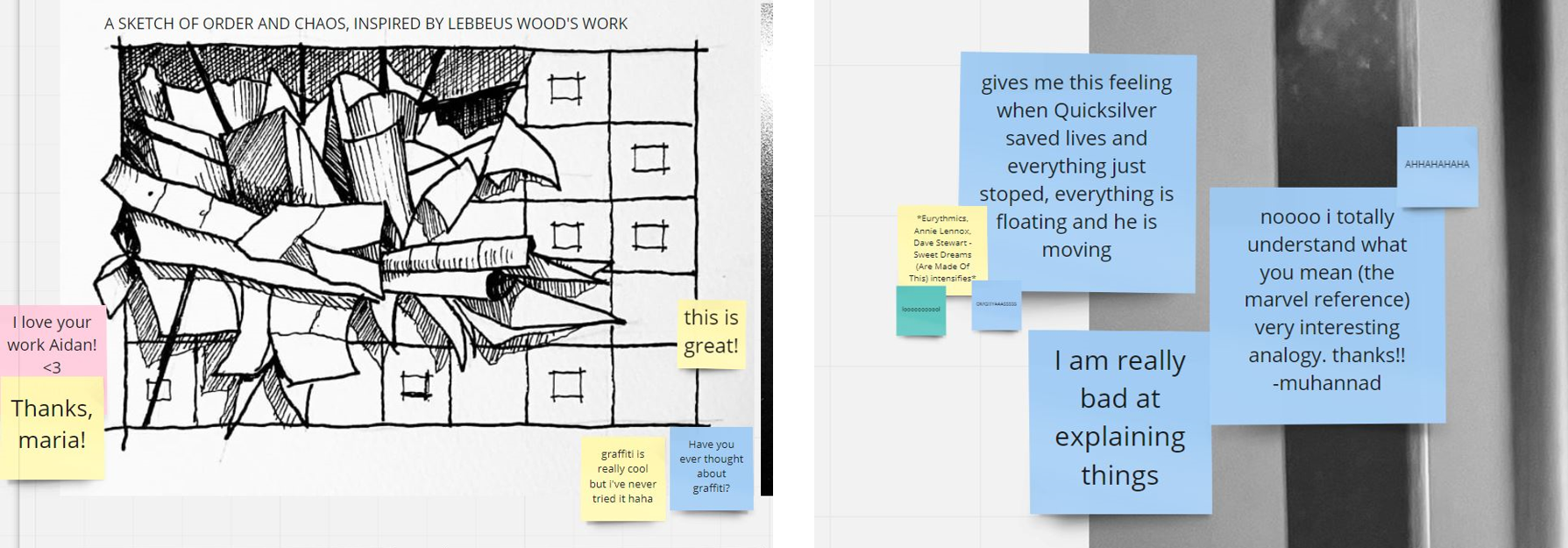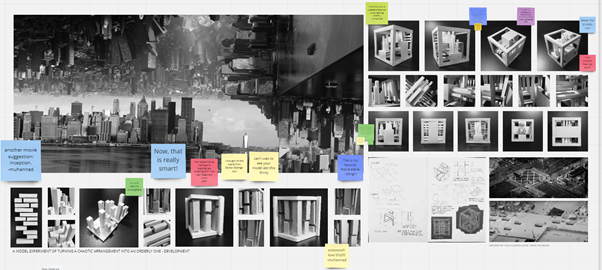Emily Scullion, Smajo Beso and Jen Naden, Teacher in Architecture
INTO Newcastle University
What did you do?
We set up an online student community using Miro in an attempt to replicate the studio culture that would be otherwise missing from architectural education when teaching online. Miro is an online platform that “provides an engaging, intuitive, in-person collaboration experience with multiple options for real-time and asynchronous teamwork on an online whiteboard” (https://miro.com/)
Who is involved?
Emily Scullion, Teacher Architecture, INTO Newcastle University
Smajo Beso, Teacher Architecture, INTO Newcastle University
Jen Naden, Teacher Architecture, INTO Newcastle University
How did you do it?
We set up a Miro workspace for each of the architecture pathways; Foundation, International Year One and Graduate Diploma. Students each have an individual A0-sized ‘board’ on their pathway’s workspace but can also access, view and comment on the other pathways too.
We use the workspaces in real-time during online design studio sessions to replicate the same format for tutorials we are used to in a real-life architecture studio setting. This means we can see all of the students work without having to share screens. When used alongside Zoom we can give individual verbal feedback or look at someone’s work together as a group and whole class; monitor that students are actually working while we conduct individual tutorials; and we can also draw over/ correct student’s plans and drawings as we would usually in tutorials. Studio sessions are usually quite long but individual tutorials or contact time with an individual student might only be 15-20mins. While using Miro, students can continue to work on their own board (while the teacher monitors) as they are waiting for their tutorial. This also allows us to bring students together if we see that students, individually or collectively, are struggling with a task to demonstrate or show examples just like we would in a real studio.
The students continue to use the workspaces outside of class time essentially as a pin-up space to document their ideas, design development and thought process as their projects progress. The tutors can leave informal guidance on post it notes in between scheduled class time as would usually happen in real-life studios. Students also leave notes for each other with helpful suggestions, sharing tips or just to provide positive moral support to their friends and peers.
Why did you do it?
The ‘studio culture’ is a vital part of architectural education and practice and was noticeably missing once we started teaching online in March 2020. As design tutors we rely on students being able to share and discuss ideas with their peers outside of formal teaching time, without having to worry about us listening, to be able to learn from each other and to create the necessary supportive community to get them through their time in architectural education. It is also important that students can see each other’s work to create a healthy competitive drive.
Miro provides a great platform to bring students together to try and build an online community that harvests the same atmosphere of a typical studio setting. It is useable 24/7 which is particularly helpful now we are all in different time zones and also mimics a real studio (although we do not recommend the studios are used 24/7 off course).
Another reason we needed to create this platform was so that we can keep an eye on every single student’s progression. Once we started online, we found that the shier students were withholding their design work in the online sessions – pretending they could not share their screen or not wanting to hold their sketchbooks up to the screen etc. We obviously cannot force them, so this made it almost impossible to make sure everyone was on track with various tasks or work out who was struggling and with what. Miro allows us to see and comment on what the students are working on in real time during tutorials and outside of scheduled class time. It gives us a much more accurate representation of how the students are getting on than we had without it.
Does it work and Student Voice
As tutors we find the sessions are much more enjoyable to conduct while using Miro. Architecture is a visual subject, both tutors and students respond better to the visual nature of this tool.
Interactions, engagement, and connections between students noticeably improved as soon as we started using Miro and it has remained high ever since. The students work has clearly benefitted from it also.
We have noticed that the students are more comfortable with each other in Zoom sessions now and their personalities are coming out through their interactions on the platform.
When asked, the students are enthusiastic with Miro, they like using it and find comfort in seeing other students working online when they are too.
Things to note:
Good internet connection is important, and it is worth pointing out that Miro is not supported by Canvas and there is no direct plug in to Canvas. The free version of Miro has limited space, and it is worth noting that if there are a lot of people using the Miro boards a license may need to be purchased, but this is at a school level.
Graduate Framework
This approach develops the following attributes:
- Engaged
- Resilient
- Creative, innovative and enterprising
- Future focused
- Confident




